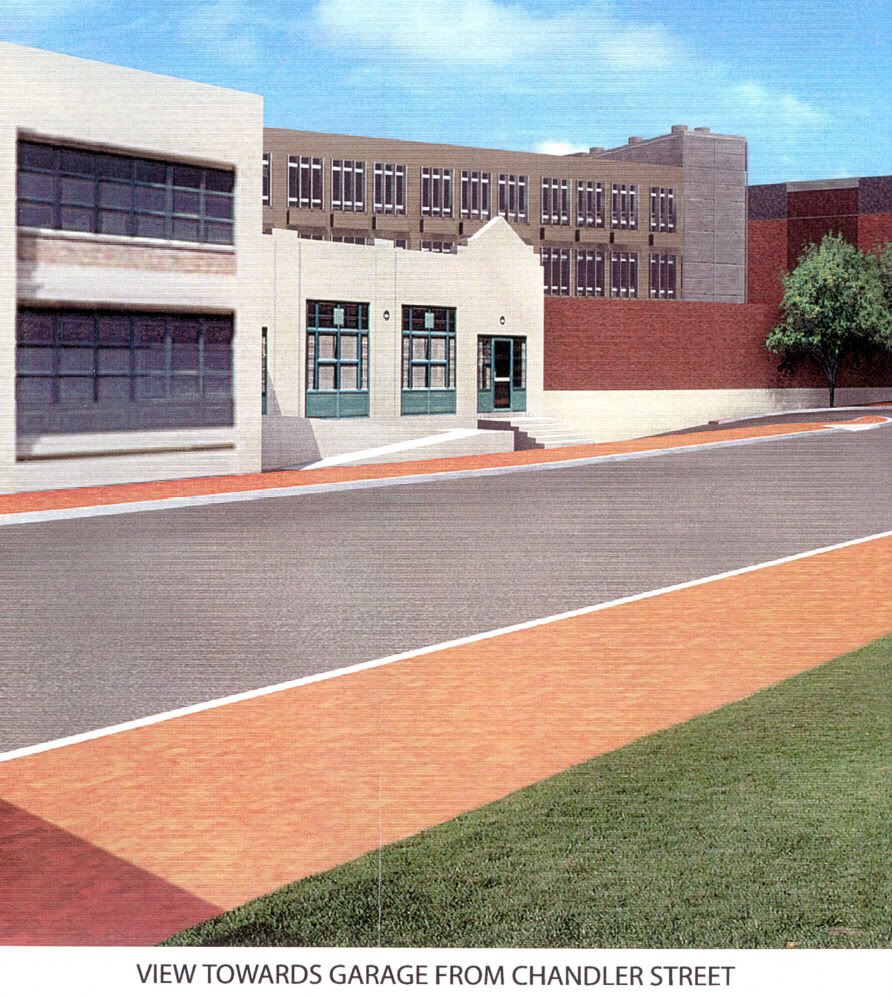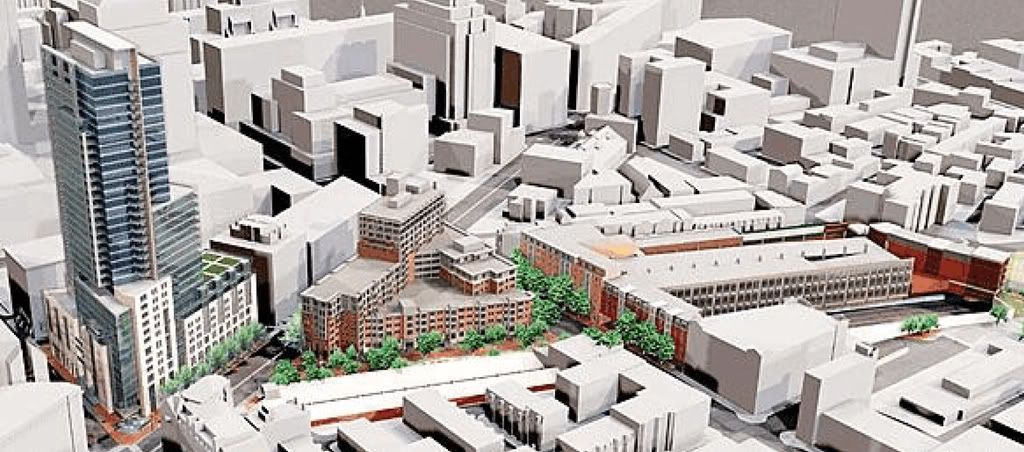Re: Columbus Center
Q-57. Why did the new owners depart instead of build?
A-57. Because the former owners got caught lying about subsidies, which left their project: (1) largely un-subsidized, (2) exceeding the new owner?s cost and risk limits, and (3) with no commercial bank financing.
From 1997-2003, just to get approved, the original owners dishonestly told the public, media, and government that they?d use no subsidies. They reiterated that promise in their written proposal (15 May 2003) and in the media. (See ?Developers decry data disclosure?, Boston Globe, 16 May 2003.)
Behind the scenes, however, the original owners always planned to get massive subsidies:
■ ?[Partner-in-charge Roger] Cassin acknowledged he didn?t broadcast the fact that he intended to seek public assistance, but said he never ruled it out.? (See ?Columbus Center seeking $50m?, Boston Globe, 14 December 2005.)
■ ?From the get-go, public support was always built into this project,? said Alan Eisner, a Winn spokesman.? (See ?Columbus Center wins tax credits worth millions?, Boston Globe, 30 June 2006.)
After lying about subsidies, they got caught. (See ?Politics of pork?, Boston Globe, 9 November 2005.)
The original owners then sold their proposal ? with its purported subsidies ? to California. But two years after that sale, the project exceeds CalPERS-CUIP-MURC?s maximum project size, the project exceeds CalPERS-CUIP-MURC?s maximum investment risk, no subsidies have been disbursed, the project doesn?t meet commercial bank lending criteria, and no bank loans have been disbursed.
Now Governor Patrick has on his desk 9 unapproved subsidy requests to waste $116 million of Massachusetts funds paying California?s costs and profits.
The forum member who wrote, ?shame on all those who had anything to do with its failure? meant to blame people who criticized the proposals and the public process. But any such blame would be misplaced, because public criticism had little effect on the owners or their proposal.
In truth, Columbus Center?s mortal wound was inflicted by its owners, when they checkmated and stalemated their own business plan by lying about subsidies ? first in Massachusetts, and then in California.
Q-58. Which seats did the developer own on the Mayor?s Citizens Advisory Committee?
A-58. On 1 June 1997, Mayor Menino signed a Memorandum-of-Understanding drafted by the developers? attorneys that gave the developers ownership of most seats on the Mayor?s so-called Citizens Advisory Committee.
Then the development team began choosing and interviewing people to install into the committee seats that they owned. The developers notified MTA who they wanted, MTA notified BRA, BRA told Mayor Menino who he was allowed to appoint, and the mayor sent 7 appointment letters to:
? government affairs director Joy Conway
? real estate attorney Cynthia Keliher
? real estate broker John Neale
? labor union electrician Perry Yee
? tax attorney Christine Colley
? architect Jim Alexander
? architect David Hacin
The 4 public members democratically nominated by their communities were:
? Back Bay Architectural Commission chair & Back Bay Association delegate Tony Gordon
? South End Ellis Neighborhood Assn. delegate John Kiger, replaced by attorney Mark Grossman, replaced by architect Peter Pogorski
? attorney & Neighborhood Assn. of the Back Bay past president Fred Mauet
? South End attorney Mark Merante
On every major issue, members in the developer-owned seats voted as the developer wished. The public never had a chance.
Q-59. Is CalPERS ?shady? or ?sleazy??
A-59. No. CalPERS is neither ?shady? nor ?sleazy.? Those terms were introduced by another forum member, not by me. CalPERS is an experienced investor, charged with protecting $240 billion that provides California public employees with pensions and health care.
Precisely because of its experience and cautiousness, CalPERS did 7 things:
(1) Held back $35 million from Winn for 1.5 years (starting 01 May 2006).
(2) Demanded a looser lease, lower rent, and larger subsidies (on 18 August 2006).
(3) Moved Winn?s post-construction profits from 2nd-in-line to last-in-line (announced 29 February 2008).
(4) Asked Massachusetts to subsidize California?s profits with 9 subsidies (in March 2008).
(5) Pulled laborers and equipment off the site (on 26 March 2008).
(6) Threatened to never return if they don?t get their way (on 26 March 2008).
(7) Demanded Governor Patrick ?guarantee? their subsidies (on 27 March 2008).
The behavior of CalPERS managers toward Winn, MTA, and Governor Patrick reveals that they have lost confidence in whatever they bought from Winn two years ago. And no commercial banker has shown any confidence at all; even CalPERS? deep pockets couldn?t cure that.
Q-60. Is there a cost savings or a cost premium for air-based versus land-based construction?
A-60. For over a decade, I have been urging the state and its developers to publish an independent, definitive study comparing all costs ? and all savings ? of both air-based and land-based construction methods.
That would prove the extent of this long-rumored ?deck premium? and it would put the issue to rest for once and for all.
But no such study was ever done. Why did the owners refuse?
If there were any cost premium, they would have jumped at the chance for a study, because it would have reduced controversy and hastened approval of their no-bid, no-disclosure proposal. But they know there is no cost premium ? they originated the notion ? and that publishing a credible study would just raise their rent.
Q-61. Does ?master plan compliance? equal ?project changes??
A-61. No. There?s no record of me ever asking for any proposal changes, because I never did. I have urged nothing more than compliance with the Turnpike Master Plan (which cost $1 million and 2 years to create).
It?s unfair for forum members to label a community?s desires for master plan compliance as ?changes? ? as though compliance is nothing more than last-minute, unnecessary frivolities.
To be fair, all the ?changes? actually came from the developers, who after studying the Turnpike Master Plan for 2 years (1999-2000), simply ignored it, degraded their potentially compliant proposal into a non-compliant one, and replaced the required 2-acre public park with a 626-car garage.
When it was discovered that the developers omitted all mention of UFP (ultrafine particulate matter) air pollution, I did ask MTA to add available technology to the 14 exhaust vents. That would keep transportation corridor communities from becoming any more unhealthy than other areas. Otherwise, people working and living there will suffer a ten-fold increase in UFP air pollution exposure, which every public health professional knows dramatically increases illness, hospitalization, lost wages, and premature death.


